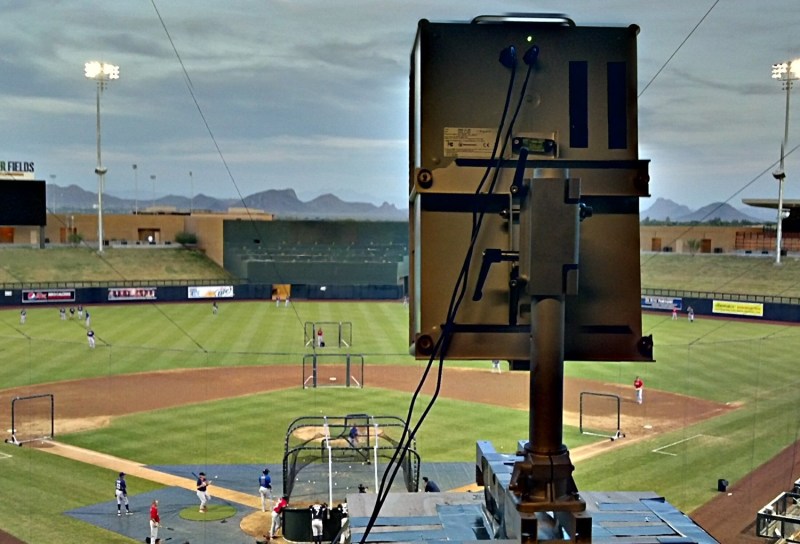Major League Baseball is set to expand its experimentation with robot umpires during spring training in 2025, with plans to utilize the challenge system at 13 different ballparks, which will host a total of 19 teams. This continued testing phase is aimed at determining whether the automated umpire system is ready for a broader rollout in the future, potentially as soon as the 2026 regular season.
Commissioner Rob Manfred discussed the plan at an owners meeting this week, as reported by Fox Sports, revealing that if the trial is successful, MLB could see robot umpires in regular-season games by 2026.
However, for this to become a reality, Major League Baseball will need to negotiate an agreement with the MLB Umpires Association, as their current Collective Bargaining Agreement (CBA) expires on December 1, 2025. The use of automated umpiring technology would be considered a term and condition of employment, and therefore requires negotiation.
“I would be interested in having it in 2026,” Manfred said. “We do have a collective bargaining obligation there. That’s obviously a term and condition of employment. We’re going to have to work through that issue, as well.”
MLB has been testing automated umpiring technology in the minor leagues for the past five years, working out the kinks in the system and addressing challenges related to defining the strike zone.
The challenge system allows teams to contest ball and strike calls made by the home plate umpire, with the automated system providing an instant review of the pitch. This spring training will be a pivotal opportunity for the league to gather feedback from both players and teams regarding the system’s effectiveness.
RELATED: Jerry Seinfeld Playfully Mocks Giants and Yankees in Surprise WFAN Call
“There’s two sides to that test. It’s what the clubs think about it and also what the players think about it,” Manfred added. “And we’re going to have to sort through both of those.”
The league’s primary goal is to strike a balance between technological advancement and preserving the integrity of the game. Introducing robot umpires has sparked a lot of debate among players, coaches, and fans.
Supporters of the technology argue that automated umpiring will eliminate human error and ensure greater consistency in calling balls and strikes, while critics worry it could take away from the human element that has always been part of baseball’s charm.

During spring training, the league will assess both the technical performance of the automated system and the reception from players and managers.
MLB aims to determine whether the system could effectively complement or replace the traditional home plate umpire, and if the challenge format can enhance the fairness of the game while keeping it entertaining.
The automated strike zone system is designed to call pitches with precision and accuracy, potentially eliminating controversial calls that can alter the outcome of games.
However, there are still hurdles to overcome, including establishing a consistent strike zone that players feel is fair and adapting to the natural variance that comes with different player heights and stances. These are some of the key issues that will be addressed during the spring training trial.
If the league and the MLB Umpires Association can reach an agreement, and if feedback from this next phase of testing is positive, baseball could see a significant transformation by the 2026 season.
For now, all eyes are on the upcoming spring training, as MLB continues to explore how technology might play a role in the future of America’s pastime.







